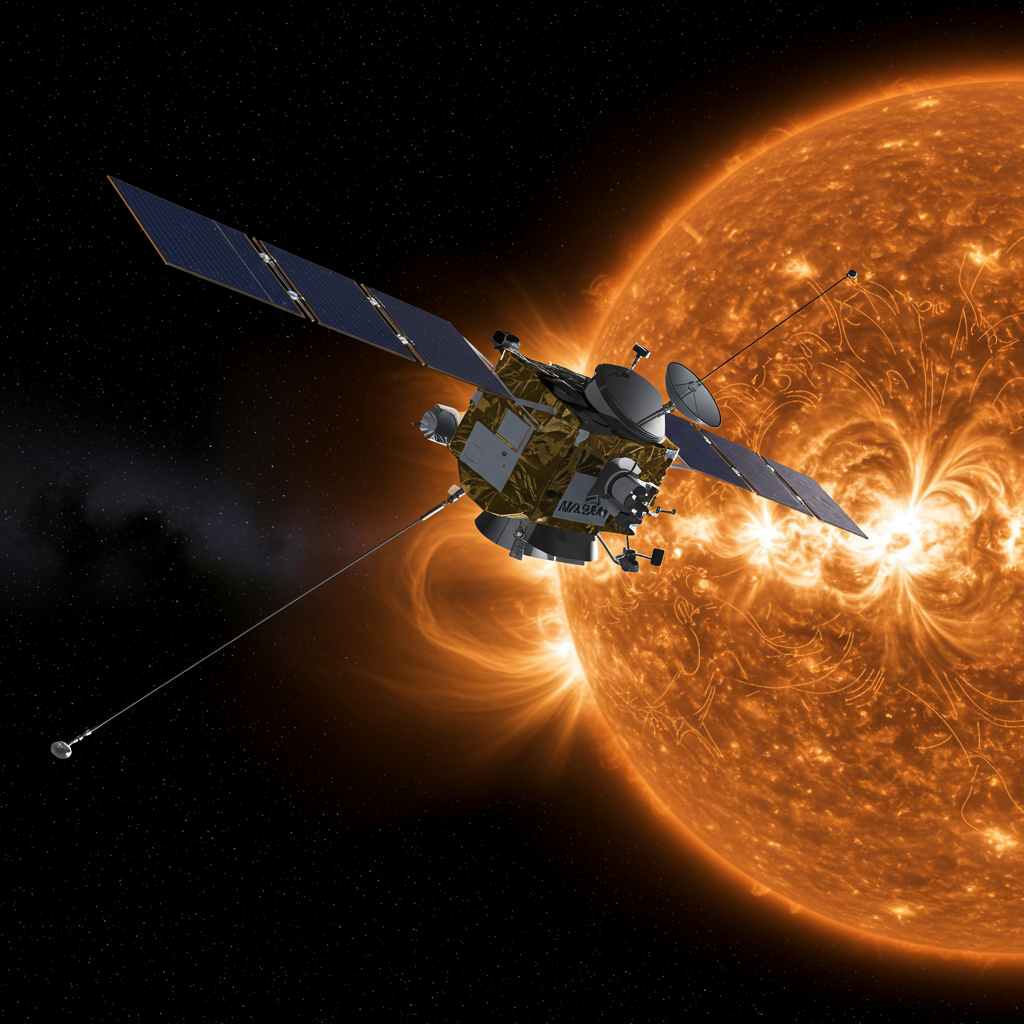For the first time ever, humanity has witnessed the Sun’s south pole in unprecedented detail, thanks to the European Space Agency (ESA) and NASA’s Solar Orbiter spacecraft. These groundbreaking initial images and video, captured from a unique high-latitude orbit, are set to revolutionize our understanding of our closest star and its powerful influence on Earth.
Until now, observations of the Sun have primarily been limited to views near its equator from spacecraft within the ecliptic plane – the flat disk where planets orbit. Solar Orbiter, however, is deliberately tilting its path out of this plane, achieving angles up to 17 degrees below the solar equator for these initial views.
Why the Sun’s Poles Are Critical
Observing the Sun’s poles directly is a monumental step for solar physics. These regions are considered key to unlocking the secrets of the Sun’s approximately 11-year activity cycle – the rhythmic shift between periods of relative calm and intense solar storms. Understanding and predicting this cycle is crucial because powerful bursts of energy and particles from the Sun, known as space weather, can significantly impact our technology-dependent world, potentially disrupting satellite communications and even causing power grid failures on Earth. They can also create stunning auroras.
Prof. Carole Mundell, ESA’s Director of Science, underscored the significance, stating these are “humankind’s first-ever views of the Sun’s pole.” She emphasized that since the Sun is both “giver of life and potential disruptor,” it is “imperative that we understand how it works and learn to predict its behaviour.”
First Glimpse: A Dynamic Polar Atmosphere
The initial images provide a never-before-seen look at the Sun’s south pole. They reveal a shimmering, bright atmosphere reaching temperatures of a million degrees Celsius. Interspersed within this glow are darker clouds of gas, still searingly hot at one hundred thousand degrees. These are the closest and most detailed views ever captured of a solar pole.
The Sun’s Magnetic Engine and the Pole Flip
From Earth, the Sun appears as a uniform, featureless disk. However, using instruments sensitive to different frequencies of light, scientists know our star is a dynamic, fluid ball. Powerful magnetic fields twist and tangle throughout its surface and atmosphere, generating explosive flares and vast loops of superheated gas.
These magnetic fields dictate the Sun’s activity level. During quiet periods, the fields are relatively ordered, with fixed north and south magnetic poles. As the 11-year cycle progresses, the fields become increasingly complex and chaotic, ultimately leading to a dramatic event where the magnetic north and south poles essentially flip places. It is during this chaotic phase that the Sun is most likely to unleash violent storms toward space and Earth.
Solving a Crucial Puzzle: The Missing Polar Data
Predicting exactly when and how these storms will occur has been a major challenge, largely due to a lack of data on how the Sun’s magnetic fields migrate towards its poles. Scientists knew the magnetic field reversal happened, but observing the process at the poles from Earth’s orbital plane was impossible.
Prof. Lucie Green of UCL described this polar data as “the missing piece of the puzzle.” Solar Orbiter’s unique high-latitude orbit provides this missing perspective, allowing scientists to measure, for the first time, the crucial fluid flows across the Sun that transport magnetic field fragments to the polar regions, feeding into the field reversal process.
Initial data from the spacecraft’s Polarimetric and Helioseismic Imager (PHI) instrument, which maps the Sun’s magnetic field, has already revealed surprising findings. During this phase where the Sun is ramping up towards its most active period (solar maximum), the magnetic field at the south pole appears as a “messy jumble,” containing both north and south polarities simultaneously. This complex, mixed-polarity state is believed to be a temporary phase right before the magnetic flip completes, contrasting with the single, dominant polarity expected at the poles later in the cycle during solar minimum. Observing this specific pre-flip state from high latitudes is invaluable.
Peering into Solar Layers: Instruments and Insights
Beyond mapping the magnetic field, Solar Orbiter employs other instruments to study the Sun. The Extreme Ultraviolet Imager (EUI) captures the superheated gas of the Sun’s outer atmosphere (the corona). The Spectral Imaging of the Coronal Environment (SPICE) instrument measures specific frequencies of light emitted by different elements (like hydrogen, carbon, oxygen, neon, and magnesium) at known temperatures in various solar atmospheric layers.
For the first time, the SPICE team has successfully used Doppler measurements to track the speed of solar material clumps by observing the shifts in these spectral lines. This capability is revolutionary, especially from a high-latitude vantage point, providing unprecedented insights into how particles are flung out from the Sun to form the solar wind. Previous attempts from the ecliptic plane were hampered by viewing angles, making Solar Orbiter’s view critical for understanding solar wind origins in three dimensions.
Paving the Way for Space Weather Forecasts
The ultimate goal of collecting this detailed polar data is to build and refine computer models capable of accurately predicting space weather. Reliable forecasts would allow satellite operators, power companies, and researchers (and aurora enthusiasts) to better prepare for the impact of solar storms.
Prof. Christopher Owen called this predictive capability “the Holy Grail of solar physics.” While the new Solar Orbiter data is foundational for understanding the basic science, he noted that more work is needed before scientists can reliably predict Earth-impacting eruptions based on signals from the Sun’s poles.
These initial images are just the beginning. Assisted by further Venus flybys, Solar Orbiter will continue to increase its orbital tilt, reaching angles of 24 degrees in 2026 and 33 degrees in 2029. These increasingly steep views, combined with data from all ten of the spacecraft’s instruments (data from the first full ‘pole-to-pole’ pass is expected by October 2025), are poised to fundamentally transform our understanding of the Sun’s magnetic field, the solar wind, and the complex processes driving solar activity.
References
- www.bbc.com
- www.nbcnews.com
- www.livescience.com
- <a href="https://www.esa.int/ScienceExploration/SpaceScience/SolarOrbiter/SolarOrbitergetsworld-firstviewsoftheSunspoles”>www.esa.int
- www.space.com




